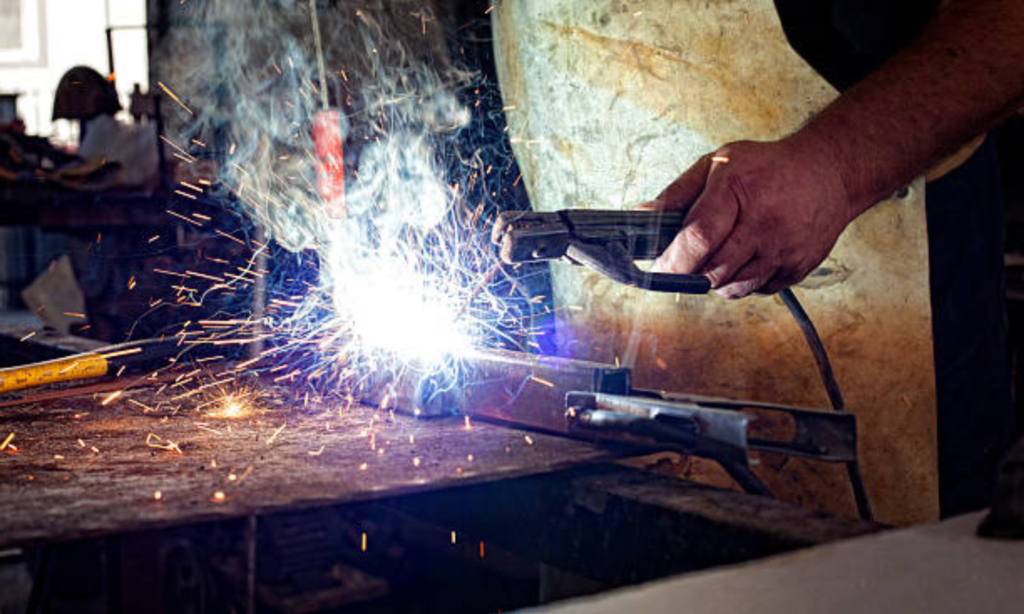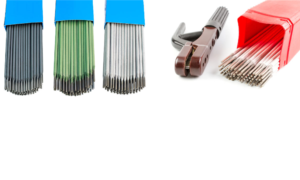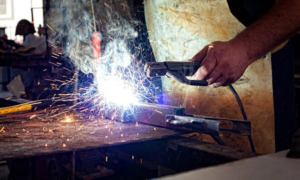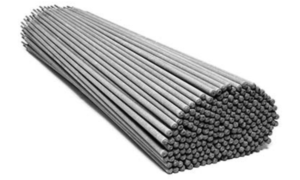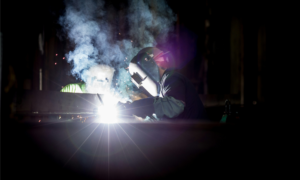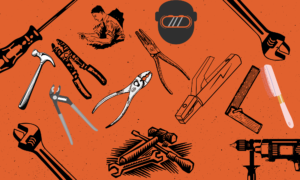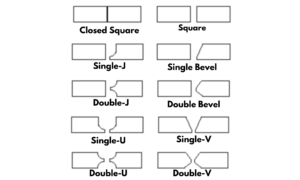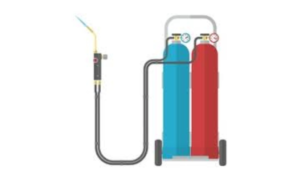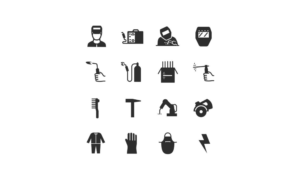The Role of Flux in Welding: A Comprehensive Guide
Welding is an essential process in various industries; from construction to the joining of metal components, it is crucial. One of the unsung heroes of this process is flux, a material that significantly influences the quality and integrity of welds. In this article, we will delve into the role use of flux in welding, exploring its types, functions, importance, and applications across different welding techniques.
Introduction to the Use of Flux in Welding
Flux is a chemical substance used during welding to prevent oxidation, contamination, and other defects that can compromise the weld’s strength. When metals are heated to their melting point, they can react with oxygen in the air, forming oxides that weaken the weld. Flux acts as a protective barrier, shielding the molten metal from these reactions and ensuring a clean, robust weld.
Historically, the use of flux dates back to ancient blacksmiths, who utilized natural materials like clay and charcoal to protect metal during forging. Today, fluxes are formulated from various chemicals, including carbonates, fluorides, chlorides, and silicates, tailored to meet the specific needs of different welding techniques and metals.
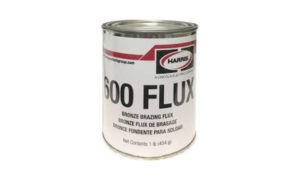
Functions of Flux in Welding
Flux serves several critical functions in the welding process, each contributing to the quality and durability of the weld. The primary functions of flux include:
Prevention of Oxidation
When metal is heated, it can react with oxygen, leading to the formation of oxides that weaken the weld. Flux prevents this oxidation by creating a protective barrier that shields the molten metal from exposure to air.
Cleaning the Metal Surface
Before welding, metal surfaces may be contaminated with oil, dirt, rust, or other impurities. Flux helps clean the metal by reacting with these contaminants and forming a slag that floats to the surface of the weld pool, making it easy to remove after welding.
Stabilizing the Arc
In arc welding, flux plays a crucial role in stabilizing the electric arc between the electrode and the workpiece. This stabilization ensures a consistent and smooth welding process, leading to uniform welds with minimal defects.
Protecting the Weld Pool
The molten metal in the weld pool is highly reactive and can easily absorb gases like hydrogen, nitrogen, and oxygen, leading to porosity and other defects. Flux protects the weld pool by creating a gaseous shield that prevents the absorption of these gases.
Alloying and Refining
In some cases, fluxes are designed to introduce specific alloying elements into the weld to enhance its properties, such as strength, corrosion resistance, or toughness. Additionally, flux can help refine the grain structure of the weld, improving its mechanical properties.
Types of Flux in Welding
Fluxes are classified based on their composition, form, and the welding process they are used with. The main types of flux used in welding include:
Solid Flux
Solid fluxes are commonly used in oxy-fuel welding and brazing. They come in the form of powders, rods, or pastes and are applied to the joint before or during welding. These fluxes melt during the welding process, forming a protective layer over the weld pool.
Liquid Flux
Liquid fluxes are typically used in soldering and some brazing applications. They are applied to the metal surfaces before welding to clean and protect them. Liquid fluxes evaporate during the welding process, leaving behind a protective residue.
Powdered Flux
Powdered flux is often used in submerged arc welding (SAW) and other high-temperature welding processes. It is applied in a thick layer over the weld joint, where it melts and forms a protective slag. This type of flux provides excellent protection and stability during welding.
Paste Flux
Paste fluxes are used in various welding and soldering applications, especially in situations where a thick, consistent layer of flux is required. They are easy to apply and provide good protection against oxidation and contamination.
Self-Shielded Flux-Cored Wire
In flux-cored arc welding (FCAW), the flux is integrated into the core of the welding wire. As the wire melts during welding, the flux is released, creating a protective atmosphere around the weld pool. This type of flux is particularly useful in outdoor or windy conditions where external shielding gas may not be effective.
Applications of Flux in Different Welding Techniques
Flux is utilized in various welding techniques, each with its specific requirements and applications. Some of the most common welding techniques that utilize flux include:
Oxy-Fuel Welding (OFW)
In oxy-fuel welding, flux is used to clean the metal surfaces and prevent oxidation. Solid or paste fluxes are applied to the joint before welding, where they melt and protect the weld pool from contamination.
Submerged Arc Welding (SAW)
SAW is a high-productivity welding process that uses a powdered flux to protect the weld pool. The flux forms a thick slag layer over the weld, shielding it from the atmosphere and providing excellent arc stability. This technique is commonly used in heavy-duty applications, such as shipbuilding, pipelines, and structural steel fabrication.
Flux-Cored Arc Welding (FCAW)
FCAW is a versatile welding technique that uses a flux-cored wire as the electrode. The flux inside the wire creates a protective atmosphere during welding, eliminating the need for external shielding gas. FCAW is widely used in construction, fabrication, and repair work, especially in outdoor environments.
Shielded Metal Arc Welding (SMAW)
Also known as stick welding, SMAW uses a flux-coated electrode that melts during welding, forming a slag that protects the weld pool. This technique is popular for its simplicity, portability, and ability to weld a wide range of metals in various positions.
Soldering and Brazing
In soldering and brazing, flux is used to clean the metal surfaces and promote the flow of filler metal into the joint. Liquid and paste fluxes are commonly used in these processes, especially in electronics, plumbing, and jewelry making.
Selection of Flux for Welding
Choosing the right flux for a particular welding application is crucial for achieving high-quality welds. Several factors need to be considered when selecting flux, including:
Base Metal Composition
The composition of the base metal determines the type of flux needed to prevent oxidation and contamination. For example, stainless steel requires a flux with specific alloying elements to prevent chromium oxide formation.
Welding Process
Different welding processes require different types of flux. For example, SAW requires a powdered flux, while FCAW uses a flux-cored wire. The flux must be compatible with the chosen welding technique to ensure optimal performance.
Welding Position
The position of the weld joint (e.g., flat, vertical, overhead) can affect the behavior of the flux. Some fluxes are designed to perform well in all positions, while others may be optimized for specific orientations.
Operating Conditions
Environmental factors, such as temperature, humidity, and wind, can influence the effectiveness of the flux. For outdoor welding, self-shielded flux-cored wires are often preferred due to their ability to withstand windy conditions.
Desired Weld Properties
The mechanical and chemical properties of the final weld, such as strength, corrosion resistance, and toughness, should guide the selection of flux. Some fluxes are formulated to introduce specific alloying elements that enhance these properties.
Advantages and Disadvantages of Using Flux in Welding
The use of flux in welding offers several advantages, but it also comes with some drawbacks. Understanding these pros and cons can help welders make informed decisions about when and how to use flux in their work.
Advantages
- Improved Weld Quality: Flux helps produce clean, strong welds with minimal defects, such as porosity, cracks, and inclusions. It ensures that the weld pool is protected from oxidation and contamination, resulting in high-quality joints.
- Versatility: Fluxes are available in various forms and compositions, making them suitable for a wide range of welding processes and metals. This versatility allows welders to tackle different applications with confidence.
- Arc Stability: In arc welding processes, flux plays a crucial role in stabilizing the electric arc, leading to consistent and smooth welding. This stability reduces the likelihood of defects and improves overall weld quality.
- Cost-Effective: Flux-cored welding techniques, such as FCAW, can be more cost-effective than other methods, especially in outdoor or high-production environments. The elimination of external shielding gas reduces costs and simplifies the setup.
Disadvantages
- Slag Removal: One of the main drawbacks of using flux is the need to remove slag after welding. Slag can be time-consuming to clean, especially in complex joints or multi-pass welds. Failure to remove slag properly can lead to defects in subsequent weld passes.
- Health and Safety Concerns: Some fluxes release fumes and gases that can be harmful to welders’ health if not properly ventilated. Proper safety precautions, such as wearing respirators and working in well-ventilated areas, are essential when using fluxes.
- Limited Shelf Life: Fluxes can absorb moisture from the air, which can degrade their performance. Proper storage and handling are necessary to maintain the effectiveness of flux over time.
Recent Developments in Flux Technology
Advancements in welding technology have led to the development of new and improved flux formulations. These innovations aim to enhance weld quality, reduce environmental impact, and improve the safety and efficiency of the welding process.
Some of the recent developments in flux technology include:
- Low-Fume Fluxes: To address health and safety concerns, manufacturers have developed fluxes that produce fewer fumes and gases during welding. These low-fume formulations help create a safer working environment for welders.
- Eco-Friendly Fluxes: With increasing awareness of environmental issues, there is a growing demand for eco-friendly fluxes that minimize harmful emissions and waste. These formulations are designed to be less harmful to both the environment and the welder.
- Smart Fluxes: Innovations in materials science have led to the development of smart fluxes that can adapt to different welding conditions, providing optimal protection and performance based on real-time feedback.
Conclusion
Flux plays a vital role in the welding process, ensuring the quality and integrity of welds across various applications. By preventing oxidation, cleaning metal surfaces, stabilizing the arc, and protecting the weld pool, flux contributes significantly to the overall success of welding projects. Understanding the different types of flux, their functions, and how to select the right one for specific applications can empower welders to achieve high-quality results.
As welding technology continues to evolve, staying informed about advancements in flux formulations will be essential for maintaining safety, efficiency, and environmental responsibility in the welding industry. Whether you’re a seasoned welder or just starting, recognizing the importance of flux can enhance your welding skills and lead to better outcomes in your projects.
Takeaway: The right flux can make all the difference in achieving strong, clean welds. Always consider the specific requirements of your welding project when selecting flux to ensure optimal results.

